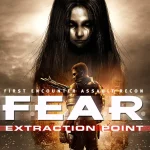World in Conflict is a 2007 real-time tactical video game developed by the Swedish video game company Massive Entertainment and published by Sierra Entertainment for Microsoft Windows.
The game, released in September 2007, received generally favorable reviews and several awards. An expansion pack, titled “World in Conflict: Soviet Assault,” was released in March 2009.
In the vast landscape of real-time strategy games, “World in Conflict” stands as a remarkable gem that brought a fresh perspective to the genre.
Developed by Massive Entertainment and published by Sierra Entertainment, this title immerses players in an alternate history, focusing on the Cold War turning hot in the late 1980s.
In this article, we’ll explore the world of “World in Conflict,” dissecting its storyline, gameplay mechanics, and the enduring legacy it has left within the realm of real-time strategy gaming.
A World in Flames: Plot and Setting

“World in Conflict” unfolds in an alternate history where the Cold War erupts into a global conflict. The game is set in 1989, with the world teetering on the brink of annihilation. Players step into the boots of Lieutenant Parker, a U.S. Army officer tasked with leading an ensemble of military units in a world ravaged by war.
The game presents its story through a gripping narrative that combines in-game dialogues and cutscenes, creating an immersive storytelling experience.
Woven together, the characters’ perspectives allow players to experience the unfolding drama from multiple angles.
The intense drama and the looming threat of a Soviet invasion create an atmosphere of tension and urgency that keeps players engaged throughout the campaign.
Gameplay Mechanics: Tactical Brilliance
“World in Conflict” distinguishes itself with a tactical and strategic approach to real-time strategy gameplay. The game ditches resource management, focusing instead on commanding units and making crucial decisions in the heat of battle. Players are responsible for directing a variety of units, from infantry to armored vehicles and air support.
The game’s mechanics emphasize teamwork and coordination, as each unit type has a unique role on the battlefield. Combining these forces effectively is the key to success. Whether it’s ordering a carpet bombing run or deploying anti-air units to protect the skies, “World in Conflict” challenges players to think strategically.
Expansive Multiplayer: The Theatre of War

While the single-player campaign is compelling, “World in Conflict” truly shines in its multiplayer mode, aptly named “Theatre of War.” This mode enables players to engage in large-scale battles alongside friends or players from around the world. Coordinating with teammates and forming strategies is essential for victory, creating a dynamic and ever-changing gaming experience.
Eye-Catching Visuals and Immersion
The game’s visuals were ahead of their time, boasting detailed environments, realistic weather effects, and breathtaking particle physics. “World in Conflict” manages to capture the chaos and destruction of war with remarkable authenticity. An evocative soundtrack complements this visual immersion, enhancing the game’s emotional impact.
Legacy and Enduring Appeal
“World in Conflict” left an indelible mark on the real-time strategy genre. Its innovative approach to resource management and focus on tactical decision-making set it apart from traditional RTS titles.
The game’s successful multiplayer component, “Theatre of War,” added a layer of complexity and camaraderie that kept players engaged long after the single-player campaign concluded.
The legacy of “World in Conflict” extends to a dedicated fan base and is a testament to the enduring appeal of real-time strategy games.
The title’s unique take on the Cold War and its captivating storytelling still draw new players into its fold, making it a true classic in the realm of gaming.
In conclusion, “World in Conflict” is a testament to the power of innovation in the gaming industry. It takes players on a gripping journey through an alternate history, challenges their strategic thinking, and offers an immersive visual and auditory experience that still holds up today.
For those who have yet to experience the chaos of a world in conflict, it’s a title that’s well worth exploring.



Comments